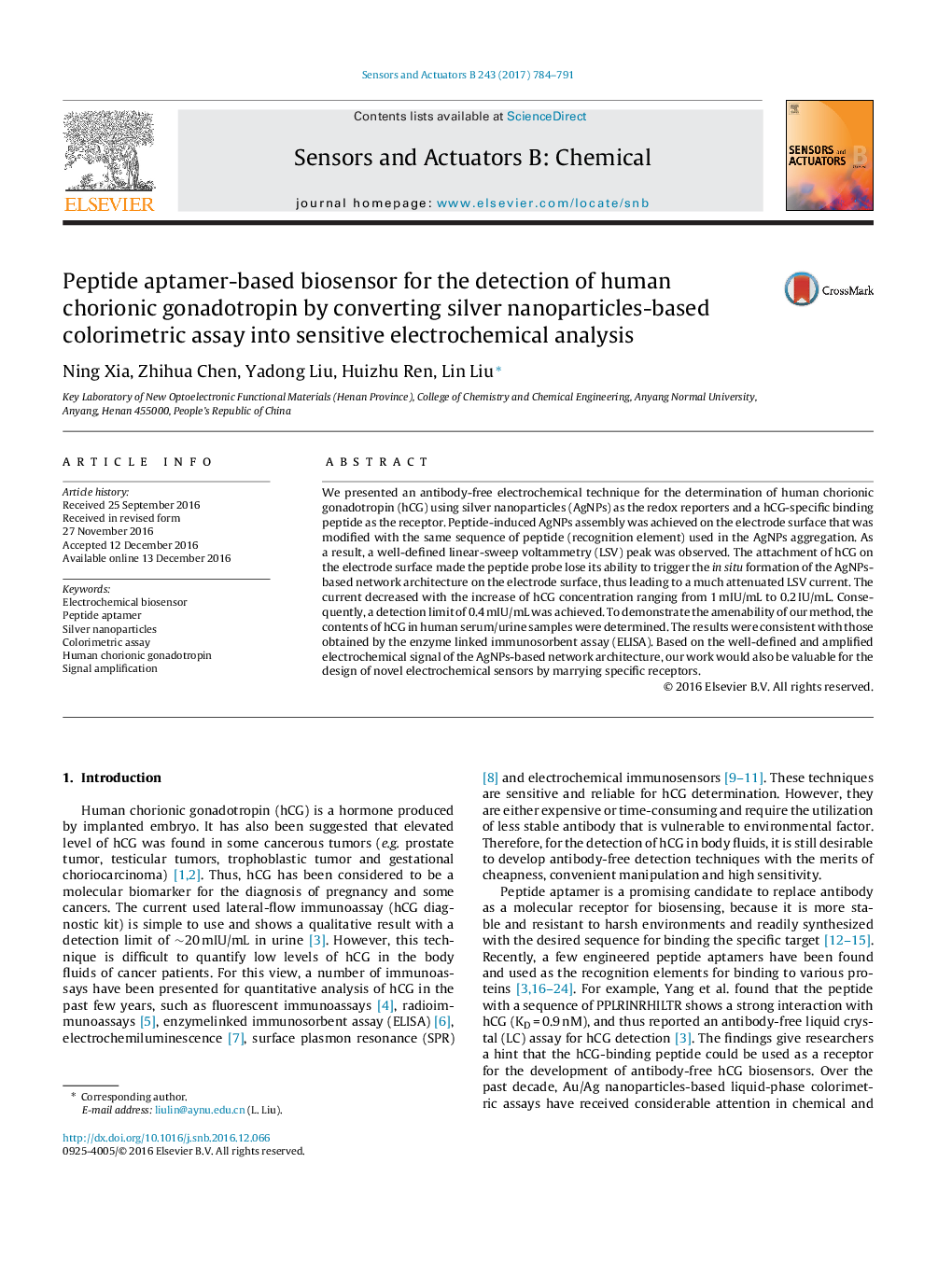| Article ID | Journal | Published Year | Pages | File Type |
|---|---|---|---|---|
| 5009539 | Sensors and Actuators B: Chemical | 2017 | 8 Pages |
â¢Human chorionic gonadotropin (hCG) was detected with a peptide aptamer as the probe.â¢Silver nanoparticles (AgNPs) were used as the redox reporters of the biosensor.â¢The hCG-binding peptide induced the assembly and aggregation of AgNPs.â¢The peptide-hCG interaction inhibited the assembly of AgNPs on electrode surface.â¢The linear range was 0.001-0.2 IU/mL and the detection limit was 0.4 mIU/mL.
We presented an antibody-free electrochemical technique for the determination of human chorionic gonadotropin (hCG) using silver nanoparticles (AgNPs) as the redox reporters and a hCG-specific binding peptide as the receptor. Peptide-induced AgNPs assembly was achieved on the electrode surface that was modified with the same sequence of peptide (recognition element) used in the AgNPs aggregation. As a result, a well-defined linear-sweep voltammetry (LSV) peak was observed. The attachment of hCG on the electrode surface made the peptide probe lose its ability to trigger the in situ formation of the AgNPs-based network architecture on the electrode surface, thus leading to a much attenuated LSV current. The current decreased with the increase of hCG concentration ranging from 1Â mIU/mL to 0.2Â IU/mL. Consequently, a detection limit of 0.4Â mIU/mL was achieved. To demonstrate the amenability of our method, the contents of hCG in human serum/urine samples were determined. The results were consistent with those obtained by the enzyme linked immunosorbent assay (ELISA). Based on the well-defined and amplified electrochemical signal of the AgNPs-based network architecture, our work would also be valuable for the design of novel electrochemical sensors by marrying specific receptors.
